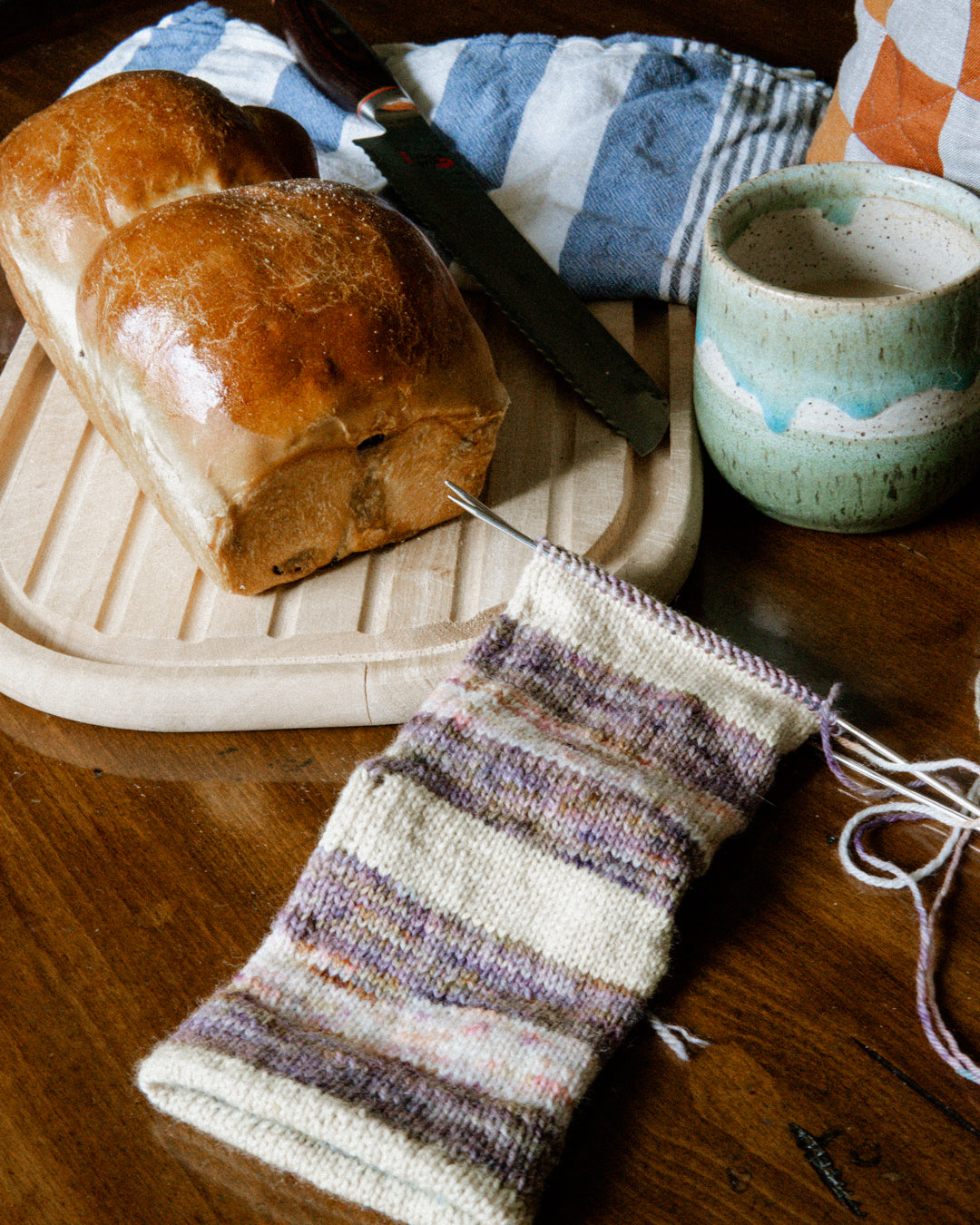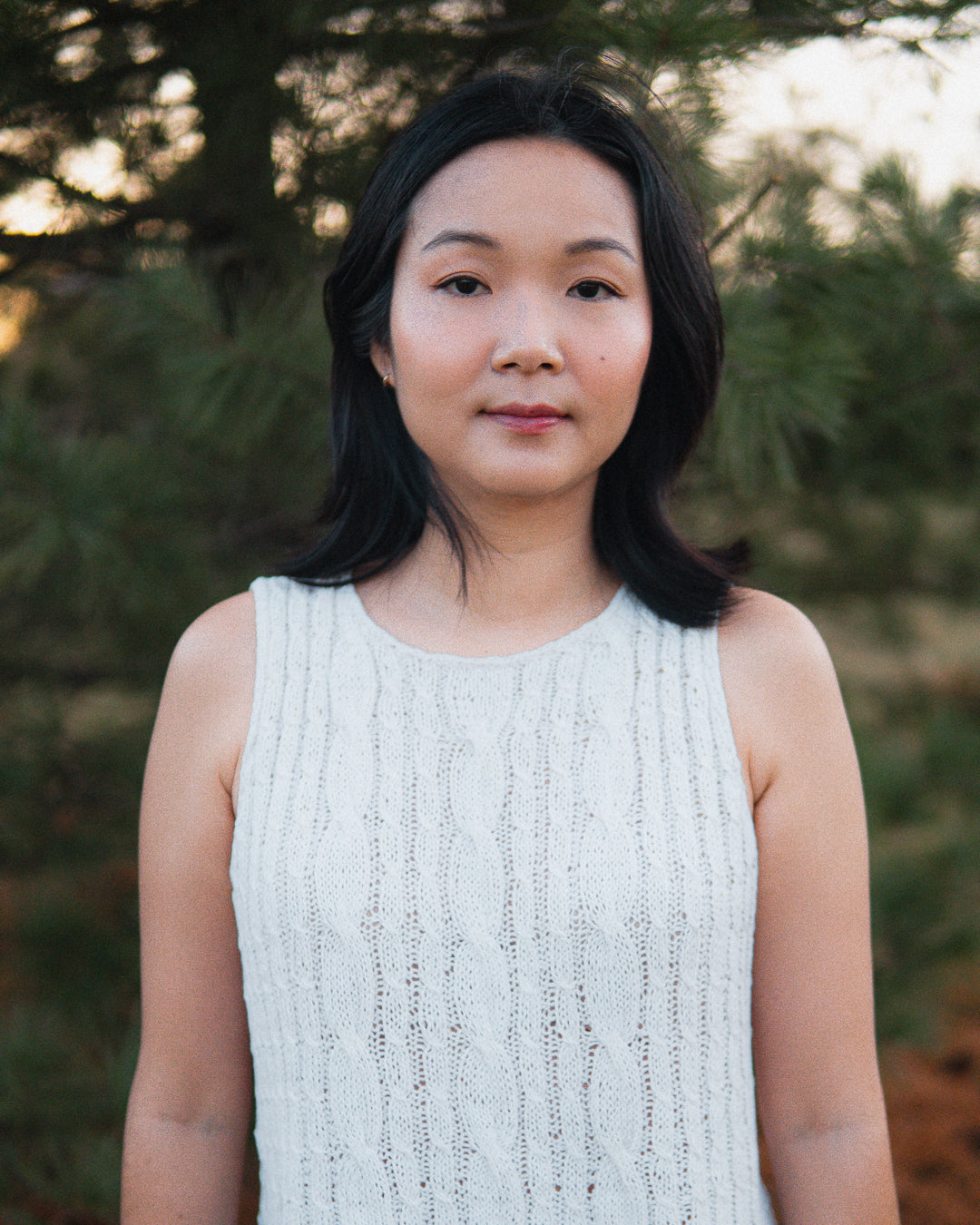
4 needles for knitting socks to try
I feel like every knitter who gets into sock knitting goes through the same thing: we learn how to do it on one needle configuration, and try another, and cycle through them endlessly until we finally settle on the ones we truly love.
If you are new to sock knitting, I've got here an overview of all the different ways you can knit socks, as well as my experiences with each and which one I ended up landing on.
Classic DPN's, an oldie but a goodie

These classic DPN's are the ones that have been around a long, long time. Did you know that historically, before circular needles were invented, super extra long DPN's were used to knit circular garments?
To knit small circumferences, you'll arrange your stitches onto 3 or 4 needles, and knit on a 4th or 5th needle. When each needle's stitches have been worked, it is freed up to become the next needle to rotate into the next one.
DPN's have become a mainstay for a reason. They are easy to make and affordable for the knitter.
Magic Loop with Long Circulars

Since the invention of circular needles, many of us have some of these around in our knitting kits.
To work these, you'll work stitches as if they are on DPN's, but with the middle of the cable being one of the stitch holding areas. I like this tutorial by Tin Can Knits for learning how to work magic loop.
I favor these for knitting garment sleeves in the round, because I already have them for knitting the other parts of the garment. Working magic loop using fixed circulars (like the ones pictured above) or better yet, from an interchangeable set I already own is the most affordable way to knit small circumferences in the round.
I always recommend that new knitters who are looking to knit sleeves learn magic loop first because it does not require additional equipment beyond what they need to finish the rest of the garment.
Magic loop as a technique also excels at a technique that you can only do with magic loop: two at a time knitting. Many knitters love to work through two socks or two sleeves at a time to make them identical. If this is intriguing to you, I recommend Very Pink's tutorial.
Tiny circulars: the speedy way

In recent years, super short circulars as short as 8-10" / 20-25 cm have come into vogue for knitting quickly around and around.
If you're having trouble with laddering in the spaces between needles using the previously mentioned methods, this is a good one to try.
Because you don't need to switch needles or pull them along a loop as for the magic loop method, you can zoom along quite speedily on small circulars like this, and it's especially satisfying and easy when you're knitting something like a stockinette section.
However, there are some downsides which make these not my personal favorite:
1 - I find these kind of difficult on the hands and my hands cramp up. Many of my customers also mentioned that they cause cramps for them.
2 - You still need something like a DPN or magic loop to work the heels and toes of a sock, because the tiny circulars are not small enough for super small areas like that.
However, if you don't have cramping issues, or if you are able to manage them, these are a quick way to zoom through plain sections of a sock or sleeve. They have become a favorite with many of my sock knitter and designer friends.
I do not recommend these for mittens, because IMO there's so much going on in mitten shaping that these are a little harder to work with in those situations.
My personal winner: FlexiFlip by Addi

FlexiFlip by Addi have been around for a few years now, and they’ve replaced my previous favorite, the magic loop method, as my preferred way of knitting small circumferences in the round.
These clever needles are closest to DPN’s, but they have an innovative design with a flexible cable in the center. This makes it much easier to work them in the round without any trouble, and you work with just a total of 3 needles altogether, making it that much easier to put away in a project bag or keep track of generally.
The two needle tips on each of these are different, as well. One end is dull, so that stitches slip off of it more readily, while the other end, the working end, is sharper so that you can knit with it more easily.
For me, the combination of bendy center and the contrasting ends make quick work of zooming around small circumferences. I find them easy to use and minimal in laddering issues.
We have these in standard length and XL length in the shop (XL length is much more suitable for sleeves, for example, due to larger circumferences on the upper arm).
There’s no wrong way
There’s truly no wrong way to knit small circumferences in the round, and you may have to do some experimentation to figure out what way will work best for you.
I hope that this blog has given you some things to think about and a direction of which way to explore first that will fit your needs best. Happy knitting!




1 comment
I also love the Addi FlexiFlips and the 10” Addi EasyKnit Rocket needles for knitting socks and sleeves. Unfortunately, neither of these needles seem to be available in 2.25 mm, only 2.5 mm. I usually use a US 1 (2.25 mm) to get gauge for most of the socks I knit. The 2.5 mm are US 1.5. I wish they were available in 2.25 mm.
Linda Guinan
Leave a comment
This site is protected by hCaptcha and the hCaptcha Privacy Policy and Terms of Service apply.